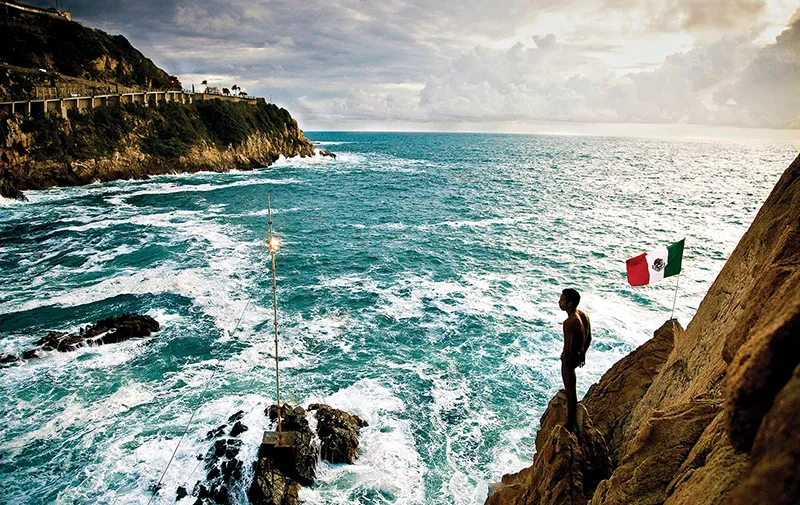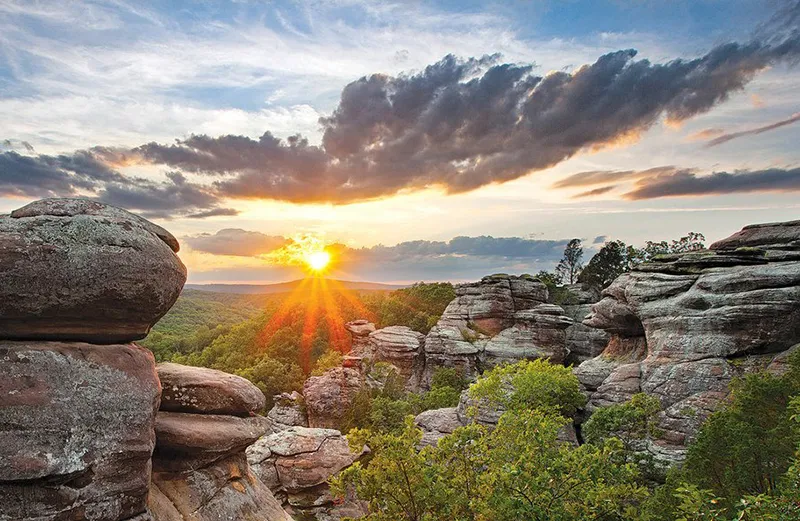Saint Vincent and the Grenadines is a small state located in the Caribbean Sea. It consists of the main island of Saint Vincent and more than 30 small islands and atolls, including the island of the Grenadines.
The capital of Saint Vincent and the Grenadines is Kingstown, which is located on the southwest coast of the main island. The state has a population of about 110,000 people and an area of 389 square kilometers.
The state’s main sources of income are tourism and agriculture, as well as small exports of bananas and other agricultural products. St. Vincent and the Grenadines is also known for its beautiful beaches, snorkeling reefs, and scenic mountain scenery. Its main crater is adorned by a picturesque volcanic lake.
Nature
The island has many rivers (including “dry”, the beds of which dried up streams of lava), and streams that feed the rainforest shelter a number of rare species of birds. It is home to an endangered species of parrots, of which there were only about 550 individuals in the wild by the end of the 20th century: the Royal, or St. Vincentian, Amazons, up to 40-42 cm long with blue-violet flecks of color in bright green-yellow plumage. Nesting is the owner of a melodious voice, the mottled American hermit thrush.
History
Discovered by Christopher Columbus (1451-1506) in 1498, the volcanic island of St. Vincent bears the date of discovery, January 22, St. Vincent’s Day, the patron saint of the Spanish province of Teulada, in its name. It is based on one of the oldest volcanoes in the West Indies (about 60 million years old), the active volcano Soufrière (1234 m). The name means “sulfurous” in French, as it is characterized by active outgassing. In our era alone, it has erupted about 160 times and covered most (except the southern part) of St. Vincent’s beaches with black sand. Each new eruption of Soufrière caused damage to the local agriculture: its activity was one of the reasons why the economy of this country was reoriented from coffee, tobacco, indigo and cotton export to tourism, including the elite Vulcan gives the entire island a mountainous relief: on its southern slope a ridge of gradually descending craters descends to the sea.
Beautiful island at the time of the arrival of Europeans was inhabited by tribes of Arawak Indians (about III century) and their successors, presumably in the XII-XIII centuries, the Caribs. The Caribs were very bellicose and offered great resistance to the Spaniards. However, until 1627 the island was ruled by Spain whose loyal servants defended themselves against the Caribs by pointing the cannons of their coastal forts into the interior of the island – to intimidate the local population. The Spanish were succeeded by the British and French, who are considered the founders of the first permanent European settlement on the island. As in all their colonies, they cultivated all sorts of exotic crops that grew well in the island climate. Africans were brought in to work the plantations and mingled with the Indians to form the “Black Caribs. The ethnic composition of the island after the abolition of slavery in 1834 was also supplemented by indentured laborers from India and Portugal. Together they formed a remarkably diverse island ethnos.
In the middle of the XVIII century the British reconquered the islands from the French, and in 1783 the islands became British property under the terms of the Treaty of Paris (or, as it is also called, the Peace of Versailles), registering the results of the American War of Independence (1775-1783). In 1795, the French attempted to regain power by initiating a slave revolt on the island, and they succeeded. However, for less than a year: in 1796, Great Britain returned its colony. Independence from the “big brother”, St. Vincent and the Grenadines received only in 1979. But even today, this young country is part of the British Commonwealth, uniting Great Britain with its former colonies under the formal leadership of Elizabeth II.
Now
Tourism and agriculture are the backbone of the country’s economy. Families consider it normal for their children to cultivate fertile volcanic soils instead of going to school. Bananas are an important export crop of the islands. But agriculture is not reliable: earthquakes, storms, volcanic eruptions and other natural disasters have repeatedly ruined the local population and forced to start all over again. Income is not evenly distributed: the tourist areas are better developed. Fishing remains the most regular occupation for those not in the tourist business, and the local men are also skilled in building beautiful yachts and excellent sailors. Still, persistently high unemployment makes many consider migrating.
The household is left to the women. Distant relatives often live together, helping each other to earn a livelihood and raise children.
Ordinary families live in small houses of two rooms, about 70 percent of the island’s private house stock. Centralized water and electricity have only recently been available to many St. Vincentians. Prior to that, water was extracted almost by hand, with the help of a pump.
The economy of the country is supported by the construction and creation of an offshore zone: the development of this country as an offshore center began in 1976. The first drafts of the laws were created with the help of specialists from Switzerland, and later, in 1996, U.S. and British lawyers developed a package of documents, which made Saint Vincent and the Grenadines one of the most attractive tax havens to date. But despite the economic successes, the country’s foreign debt stood at 90% of GDP by the end of 2010. Significant funds are spent on developing the tourist infrastructure (for example, a new international airport is being built). Residents are supported by social programs.
However, the population does not protest against not the best living conditions and tends to take a philosophically lazy view of the world around: there are no social conflicts, foreigners are welcomed, and the unemployed prefer to spend their free time tastefully. A favorite way of relaxing is “lazing”: conceptual “doing nothing” – standing outside with a clouded eye, looking at the beauty of the landscape and inhaling the scents of flowers. If, as recommended, you don’t smoke, drink soft drinks, or get distracted by chewing gum, you can achieve almost complete nirvana.
General Information
- The state in the Caribbean Sea.
- Official name: Saint Vincent and Grenadines.
- Form of government: constitutional monarchy.
- Administrative-territorial division: 6 counties.
- Capital: Kingstown, 28,000 (2009).
- Language: English.
- Ethnic composition: 66% – Africans, 19% – mulatto, 6% – representatives of East India, 4% – Europeans, 2% – Caribbean Indians, 3% – others (2011), according to the World Fact Book.
- Religions: Anglicans 47%, Methodists 28%, Catholics 13%, and others (including Seventh-day Adventists and other branches of Protestantism) 12%.
- Currency unit: Eastern Caribbean dollar.
- Major islands: Bequia, Mustique, Canoan, Mero, and Union.
- The largest city: Kingstown.
- Major seaport: Kingstown.
- Major airport: Ernos Vale International Airport (Kingstown area).
- Area: 389 sq. km.
- Population: 103,869 (2011).
- Population density: 267 people/km2.
Climate and weather
- Tropical, humid.
- Average monthly temperatures: +24 to +28°C.
- Average annual rainfall: about 1500 mm (southeast coast), 3750 mm (inland). Typhoon zone. From May to November – rainy season.
Economy
- GDP: 31.069 billion (2010), according to the World Factbook.
- Industries: furniture manufacture, light industry (clothes), alcohol industry (rum, beer), electric apparatus assembly. Special local industry – manufacture of tennis rackets. Processing of cotton, copra.
- Agriculture: plant growing (bananas – more than 35% of export earnings, arrowroot flour from rhizomes of maranta plant – 1st place in the world; sugar cane, vegetables, tobacco, cassava, coconut); sugar production; cattle breeding (dairy products).
- Fishery.
- Services: tourism, trade.
Attractions
- Soufriere Volcano (St. Vincent Island), Baleine Falls, Easter Regatta (Bequia Island), Munhall – unusual “cave” houses by modern architect Tom Johnston (Bequia Island), St. George’s Cathedral (early 19th century) (Kingstown), Fort Charlotte (18th century, Kingstown).
Fun Facts
- A curious local musical instrument is made from the giant pods of island acacia: the dried inside seeds when shaken create a sound similar to “shak-shak”, that’s how the non-hard-made instrument is called.
- The main exhibit of religious art in the capital of St. Vincent and the Grenadines, Kingstown, is the Red Angel stained glass window, which came to the city by accident. It was conceived for St. Paul’s Cathedral in London on behalf of Queen Victoria (1819-1901). But the artists dressed the angels in red, but the queen thought it was wrong – angels were typically dressed in white. Stained glass at her command was sent as a gift to Kingstown and adorned the Cathedral of the capital – St George (early XIX century).
- Traditional animistic beliefs with features of demonism are still popular on the islands. People superstitiously close all the windows and doors at night tightly, around the necks of cattle tie red ribbons as amulets and use them along with all kinds of talismans and amulets in their own clothes.
- When the volcano Soufrière erupted in 1902, 1,565 people were killed. According to the recollections of eyewitnesses, the thickness of the ash layer in the valleys of the island was up to 60 cm, and the “ash drifts” themselves remained hot for quite a long time.
- The land on the islands is of great value. Therefore, even a small garden or vegetable garden by the house is a sign of the relative well-being of the family.
- The St. Vincent Island Botanical Garden is the oldest in the Western Hemisphere of the earth (founded in 1765).
- Ships from 20 countries use the “flag of convenience” of the State of Saint Vincent and the Grenadines.




